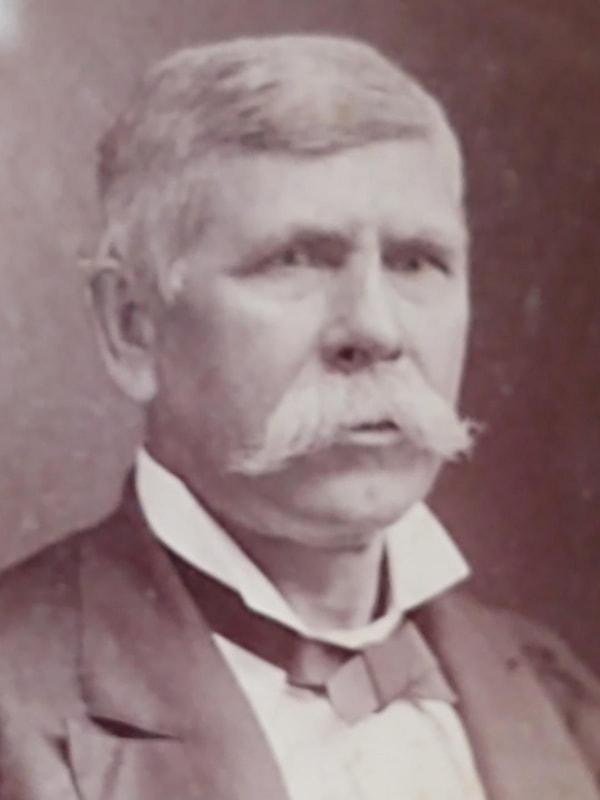|
WESTERN STAR April 5, 1945: EASTER EXHIBIT ATTRACTS CROWD Nearly 100 persons visited Lebanon’s new museum* Sunday to see many interesting antiques and historic displays including a special Easter exhibit of china and glass hens. Special collections belonging to Mrs. Herschel M. Williams and Mrs. Harry Hastings attracted considerable attention. Other displays were exhibited by Mrs. Jack Jones, Mrs. Hazel Brooks and Mrs. William Phillips. Recent contributions to the museum include a lard oil lamp given by John Holden of Morrow and a portrait of Mathias Corwin**, father of Governor Tom Corwin, presented by Misses Mary and Gertrude Cropper***. From the desk of John J. Zimkus
“Lebanon’s new museum” is the Glendower Historic Mansion. The story of Glendower begins in May 1843, when J. Milton Williams, Warren County’s prosecuting attorney, purchased just less than four acres from George Kesling. Here, within the next year or two, Williams had a home built for his family. It was the first of five mansions that would be constructed on the hill that would be called Floraville. All five houses were built prior to the Civil War. Floraville would not become part of the village of Lebanon until March 1862. Amos Bennett, an early carpenter and joiner in Lebanon, built the home for Williams. Bennett was aided in building the house by a handbook. Prominent architects like Asher Benjamin, Minard LeFebre and John Haviland had written such books. The mansion was erected in the Greek Revival style, which became popular in America in the 1820s. The Greek ideas of democracy, beauty and simplicity were considered fitting for this new republic of ours. The style appealed to America’s governmental leaders, who were looking for a suitable expression in architecture. They chose the Greek Revival style for many buildings in Washington, D.C. It is believed Ebed Stowell of Lebanon fired Glendower’s bricks from native clay and the iron grill work came from George Bundy’s foundry. The center part of the home was built first. The two wings were added a few years later. Williams, being very proud of his Welsh ancestry, called his home Glendower. He named it in honor of Owain Glyndwr, the last native Welshman to hold the title of Prince of Wales. In 1400, Glyndwr instigated the Welsh Revolt against the rule of Henry IV of England. It was Shakespeare who anglicized Owain Glyndwr’s name to “Owen Glendower” for his play Henry IV. In 1868, the land south of Turtle Creek, which included Glendower, was deeded to Elizabeth Probasco Ward for $10,000. She was the wife of the famed orator and statesman J. Durbin Ward. He succeeded Williams as Warren County prosecutor and served valiantly in the Civil War. During the second day of the Battle of Chickamauga, on September 20, 1863, Lt. Col. Ward was severely wounded. As a result, his left arm was paralyzed for the rest of his life. In November 1865, he was brevetted brigadier general “for gallant and meritorious conduct at the battle of Chickamauga.” Ward called his new home Everton, after the small town in Indiana near where he lived as a child. Ward was very proud of his kitchen garden behind the house and was said to take “great delight in his suburban home.” His favorite room at Everton was his library, which contained “the largest and best selected collection of books of the private libraries of Lebanon.” It was said he loved “talking with [his] best friends, the old authors.” Ward died in the mansion in 1886. In 1905, Joseph and Ladora Owens purchased the estate from the heirs of Ward’s widow, Elizabeth Probasco Ward. The house was put in Ladora’s name and not Joseph’s. Ladora was the daughter of Dr. Seldon Scoville, a Union Army surgeon and later a respected physician in Lebanon. The Owens family called their 1845 mansion by its original name, Glendower. Ladora Scoville Owens was a prominent member of Lebanon society, being a charter member of the Turtle Creek Chapter of the Daughters of the American Revolution as well as a charter member the Warren County Historical Society. She adored Glendower and loved to sing of its praises and share its history. I.T. Fray, an architectural historian from the Cleveland Museum of Art, featured Glendower in his 1936 book Early Homes of Ohio. In the March 1938 issue of American Home, Glendower was described as an excellent example of “one of the important domestic types of early American Architecture.” Professor Ralph Fanning of the fine arts department at The Ohio State University included a painting of Glendower in his 1946 watercolor exhibition, calling it “one of the finest bits of Greek Revival architecture anywhere in the country.” Ladora Scoville Owens died at age 90 in 1944. On January 25, 1945, Fred J. Wendt, widower of Ladora’s daughter Bessie, deeded the Durbin Ward House, as Glendower was sometimes called, to the Warren County Historical Society. Nine months later, on October 21, 1945, Governor Frank J. Laubscher, in front of a thousand spectators, accepted the deed to Glendower on behalf of the Ohio State Archaeological and Historical Society, later to be called the Ohio Historical Society, from Harry C. Schwartz, chairman of the board of trustees of the WCHS. It operated for years as the Warren County Museum and then the Glendower State Memorial. On December 3, 2007, the deed to Glendower was ceremonially returned to the Warren County Historical Society by Paul Layman of the Ohio Department of Administrative Services and Dr. William Laidlaw, Jr., executive director of the Ohio Historical Society. Accepting the deed was WCHS President Bill Dunning. The Warren County Historical Society had been managing the mansion for the state since 1982. The Glendower Historic Mansion is still considered the finest Greek Revival restored mansion open to the public in Ohio. ** Matthias Corwin (1761-1829) is best known as the father of Tom Corwin, who grew up in pioneer Lebanon and served as the governor of Ohio, a U.S. senator, the U.S. secretary of the treasury and in many other local, state and national positions. Matthias himself had a notable career. He was one of the first justices of the peace in Warren County; one of Warren County’s first commissioners; a member of the Ohio legislature, speaker of the Ohio House of Representatives and an associate judge of the court of common pleas. *** “Misses Mary (1868-1960) and Gertrude (1870-1948) Cropper” were the granddaughters of Tom Corwin and the great-granddaughters of Matthias Corwin. Provided by John J. Zimkus, Historian & Education Director of the Warren County Historical Society
0 Comments
Your comment will be posted after it is approved.
Leave a Reply. |
AuthorVarious staff and volunteer writers. Categories
All
Archives
June 2024
|
Email: [email protected]
Wchs Office/Harmon MuseumTues - Sat: 10am - 4pm
Year Round |
1795 BEEDLE cABINPhone for hours
Year Round |




 RSS Feed
RSS Feed





